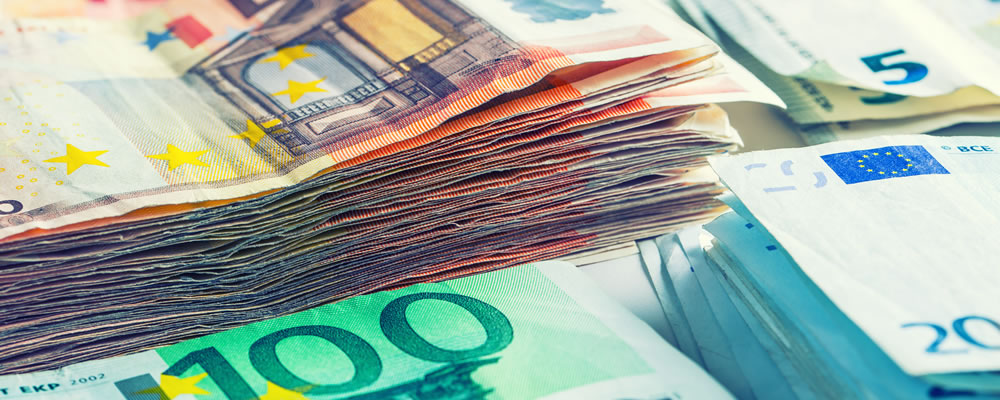Although the cash call for the struggling Monte dei Paschi failed this was not enough to weigh down the Euro, given that the Italian government is expected to step in to recapitalise the bank.
- Worries over future of Italian banking sector eased – Euro supported by anticipation of state support
- Improved UK consumer confidence not enough to boost Pound – Sentiment forecast to weaken in New Year as inflation looms
- US durable goods orders forecast to weaken in November – EUR USD exchange rate may find rallying point
- Brexit-based jitters to continue to shore up EUR GBP pairing – Lack of clarity to hamper Sterling outlook
Confidence in the US Dollar has faltered somewhat ahead of a raft of US ecostats, while the Pound remains under pressure in the absence of any significant support.
Hopes of Italian Bank Bailout Boosted EUR Exchange Rates
Shares in Monte dei Paschi continued their rollercoaster ride this week, plunging an extra 6% at the start of trading on Thursday after Qatar was reported to have walked away from its cash call. With just 2 billion of the required 5 billion Euros raised and no anchor investor found the future of the world’s oldest bank looked decidedly grim. However, as Italian MPs had approved a 20 billion Euro fund for bank recapitulation earlier in the week hopes that the ailing bank can be rescued were boosted. This has limited the negative impact on EUR exchange rates, although concerns over the future of the Eurozone nevertheless remain.
As Derek Halpenny, European Head of GMR at MUFG, noted:
‘So we would surmise that the limited financial market fallout is down to the assumption that the EUR 20bn bailout package will include funds available to protect retail investors. If that assumption turns out to be incorrect or the hit to the retail sector in Italy is larger than expected, we would then expect to see the Euro suffer.’
The German GfK consumer confidence survey for January could boost the Euro if the measure points towards an improvement in domestic sentiment. Given that the relative resilience of the Eurozone’s powerhouse economy has been underpinned by strong consumer spending a positive showing here would offer the single currency a rallying point. Even so, if the details of the Monte dei Paschi rescue plan are not considered encouraging then EUR exchange rates could still return to a downtrend.
Improved Consumer Confidence Failed to Dent EUR GBP Exchange Rate
In spite of the GfK consumer confidence survey bettering expectations to clock in at -7 rather than the -8 that had been forecast the Pound (GBP) remained under pressure on Thursday. Following the disappointing public sector net borrowing figure, which pointed towards a widening of the domestic trade deficit, demand for Sterling has been largely weak. The nature of this rise in confidence suggests that consumers are rushing to make purchases before inflation picks up further in 2017, with the measure expected to weaken once again in the New Year. As a result the Euro Pound (EUR GBP) exchange rate remained on an uptrend.
Speculation over the outlook of the UK economy outside of the EU is likely to continue weighing on the Pound for the foreseeable future. With investors still jittery over the prospect of the UK losing its current level of access to the single market the Pound is expected to remain on a generally weaker footing in the near term. No change is anticipated from the finalised third quarter UK GDP data, which may leave Sterling with limited upside potential ahead of the weekend.
Weak Durable Goods Orders Not Expected to Weigh on US Dollar (USD) Demand
Better-than-expected US existing home sales and rising mortgage applications shored up the US Dollar (USD), reiterating the relative strength of the world’s largest economy. This helped to cement market expectations that the Federal Reserve will opt to raise interest rates multiple times in 2017, continuing to tighten monetary policy in response to strong domestic data. Nevertheless, weak expectations for the latest durable goods orders data allowed the Euro US Dollar (EUR USD) exchange rate to trend higher. Forecasts point towards a -4.5% contraction on the month, a result which would suggest that consumer confidence is weakening.
However, even if the day’s raft of US data proves disappointing any gains for the EUR USD exchange rate are likely to be short-lived. Fed policymakers are primarily concerned with the health of the jobs market, with monetary policy largely focused on wage growth and progress towards full employment. As a result it seems unlikely that the ‘Greenback’ will be weighed down for long regardless of the nature of the data.
Current Interbank Exchange Rates
At the time of writing, the Euro Pound (EUR GBP) exchange rate was trending higher around 0.84, while the Euro US Dollar (EUR USD) pairing was making gains in the region of 1.04.



